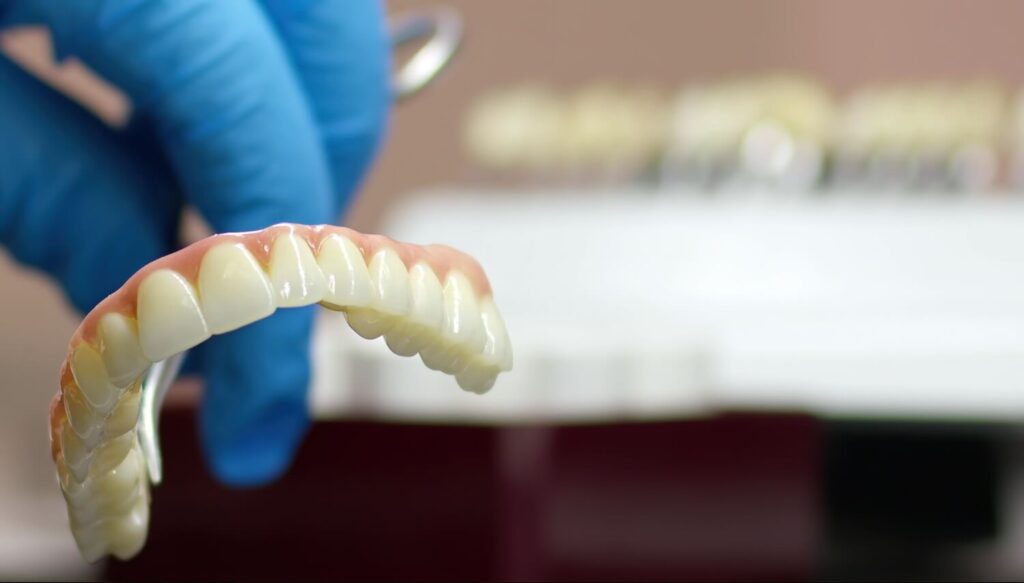When it comes to restoring damaged or missing teeth, crowns and bridges are two of the most common and effective dental treatments available. Both options offer long-lasting results and can restore your smile, but they serve different purposes and are tailored to specific dental needs. Deciding between a crown or a bridge can feel daunting without a thorough understanding of their benefits, drawbacks, and the circumstances in which they’re most appropriate.
In this article, we’ll explore the key differences between crowns and bridges, their individual benefits, and how to choose the right restoration for optimal oral health and cosmetic results.
Understanding Dental Crowns
What is a Dental Crown?
A dental crown, often referred to as a “cap,” is a tooth-shaped covering placed over a damaged, decayed, or weakened tooth. Crowns restore the tooth’s size, shape, strength, and appearance, effectively acting as a protective barrier. They are typically made from materials like porcelain, ceramic, metal alloys, or a combination of these materials, depending on the patient’s needs and the tooth’s location.
Crowns are used to:
- Protect a tooth that has been weakened due to decay or a large filling.
- Restore a broken or worn-down tooth.
- Cover and support a tooth with a large filling when there isn’t enough tooth left.
- Hold a dental bridge in place.
- Cover misshapen or severely discolored teeth.
- Cap a dental implant.
Types of Dental Crowns
- Porcelain Crowns: Known for their natural look, porcelain crowns are most commonly used for front teeth restorations. They are highly aesthetic but can be more prone to chipping compared to other materials.
- Ceramic Crowns: These crowns are similar to porcelain but are stronger, making them suitable for both front and back teeth. They also blend well with natural tooth color.
- Metal Crowns: Made from gold, palladium, or other metal alloys, these crowns are extremely durable and resistant to wear. They are typically recommended for molars that aren’t as visible because of their metallic appearance.
- Porcelain-fused-to-metal (PFM) Crowns: These crowns provide a strong metal foundation covered with porcelain, giving them a more natural look while retaining durability. However, the metal base can sometimes show through the porcelain as a dark line, especially near the gumline.
- Zirconia Crowns: Zirconia is a type of ceramic that is both durable and aesthetically pleasing. Zirconia crowns are growing in popularity due to their strength and appearance, suitable for both front and back teeth.
Benefits of Dental Crowns
- Versatility: Crowns can be used to address a wide range of dental issues, from protecting a weak tooth to covering a dental implant.
- Durability: Crowns, especially metal and zirconia, can last for many years with proper care.
- Aesthetic Improvement: Crowns can greatly improve the appearance of discolored or misshapen teeth.
- Restoration of Function: A crown restores full chewing and speaking abilities in cases where a tooth is severely damaged.
Drawbacks of Dental Crowns
- Cost: Crowns can be expensive, especially when made from high-quality materials like porcelain or zirconia.
- Invasive Procedure: A significant portion of the natural tooth must be filed down to make room for the crown.
- Potential for Sensitivity: Some patients experience temporary sensitivity after the crown is placed, especially to hot or cold temperatures.
Understanding Dental Bridges
What is a Dental Bridge?
A dental bridge is a restoration used to replace one or more missing teeth by “bridging” the gap between two adjacent teeth. The bridge is typically made up of two or more crowns on the teeth adjacent to the gap (referred to as abutment teeth) and a false tooth (or teeth) in between, called a pontic. These false teeth are made from materials like porcelain or metal alloys.
Bridges are a good option when:
- You have one or more missing teeth.
- You want to restore your smile and the ability to chew properly.
- You want to maintain facial shape and prevent neighboring teeth from shifting into the gap.
- You need a non-removable solution for replacing missing teeth.
Types of Dental Bridges
- Traditional Bridges: The most common type of dental bridge involves creating crowns for the teeth on either side of the gap and placing a false tooth (or teeth) in between. This type of bridge is highly durable but requires healthy adjacent teeth to be filed down for the crowns.
- Cantilever Bridges: These are used when there’s only one adjacent tooth available to support the bridge. Cantilever bridges are not as strong as traditional bridges and are typically used in less stressful areas of the mouth, such as the front teeth.
- Maryland Bridges: Also called resin-bonded bridges, Maryland bridges use a metal or porcelain framework to anchor the false tooth to the back of adjacent teeth. This type of bridge doesn’t require crowns, so the adjacent teeth don’t need to be filed down, making it a more conservative option.
- Implant-Supported Bridges: These bridges are supported by dental implants rather than natural teeth. This type of bridge offers excellent stability and is a good option when multiple teeth are missing in a row. However, the process requires surgery to place the implants.
Benefits of Dental Bridges
- Cost-Effective for Multiple Teeth: Bridges can replace multiple missing teeth at once, which is generally more affordable than using individual implants for each missing tooth.
- Quick Restoration: The process for a traditional or cantilever bridge is typically completed in just two visits.
- Non-Surgical Option: Bridges don’t require surgery, unlike implants, making them a less invasive option for tooth replacement.
- Prevents Teeth Shifting: Bridges can prevent adjacent teeth from shifting into the gap left by missing teeth, preserving the alignment of your bite.
Drawbacks of Dental Bridges
- Requires Healthy Adjacent Teeth: In traditional bridges, the adjacent teeth must be filed down to support the bridge, which could weaken otherwise healthy teeth.
- Potential for Bone Loss: Unlike dental implants, bridges don’t stimulate the underlying jawbone, which can lead to bone loss over time.
- Durability: While bridges are long-lasting, they are generally not as durable as dental implants or crowns. The false tooth or pontic can wear down or break after many years of use.
- Maintenance: Proper oral hygiene is essential to prevent decay around the crowns of the abutment teeth.
Crowns vs. Bridges: Which Treatment is Right for You?
Choosing between a crown and a bridge depends on several factors, including the condition of your teeth, your dental health goals, and your budget. Below, we’ll explore some scenarios in which a crown or bridge may be the better option.
When a Crown is the Best Choice
- You Have a Damaged or Weakened Tooth: If one of your teeth is cracked, worn down, or weakened by decay, a crown can restore its strength and protect it from further damage.
- You’ve Had a Root Canal: A root canal often leaves the affected tooth fragile and prone to breakage. A crown can cover and protect the tooth following a root canal procedure.
- You Want to Improve a Tooth’s Appearance: If you have a discolored or misshapen tooth, a crown can provide a more aesthetically pleasing appearance while improving its function.
- You Have a Dental Implant: Crowns are often used to cover dental implants and complete the restoration of a missing tooth.
When a Bridge is the Best Choice
- You’re Missing One or More Teeth: Bridges are designed specifically to replace missing teeth. If you have a gap in your smile, a bridge can effectively fill it while restoring your ability to chew and speak normally.
- You Want a Quick, Non-Surgical Solution: While dental implants are an option for replacing missing teeth, they require surgery and months of healing time. A bridge offers a quicker, less invasive alternative.
- You Need to Prevent Teeth from Shifting: Missing teeth can cause neighboring teeth to shift out of alignment, which can lead to bite problems and changes in your facial structure. A bridge can prevent this from happening by keeping the remaining teeth in their proper position.
Caring for Oral Crowns and Bridges
Whether you choose a crown or bridge, proper care is essential to ensure the longevity of your dental restoration. Here are some tips for maintaining your crowns and bridges:
- Brush and Floss Regularly: Good oral hygiene is crucial to preventing decay and gum disease around your restoration. Special floss threaders are available to help clean under a bridge.
- Avoid Hard or Sticky Foods: Hard foods like ice or sticky foods like caramel can damage crowns and bridges. Be mindful of what you eat to prevent unnecessary damage.
- Regular Dental Check-ups: Visit your dentist regularly for cleanings and check-ups to ensure your crown or bridge remains in good condition.
- Wear a Mouthguard if Necessary: If you grind your teeth at night, wearing a mouthguard can help protect your crowns and bridges from excessive wear.
Dental Implants Conclusion
Crowns and bridges are both highly effective solutions for restoring your smile and maintaining optimal oral health. The right choice for you depends on your specific dental needs, whether you’re looking to strengthen a damaged tooth or replace a missing one. By understanding the key differences between crowns and bridges, you can work with your dentist to choose the restoration that will provide the best long-term results for your smile and overall health.
Remember, consulting with a dental professional is essential to making an informed decision, as they can assess your individual situation and recommend the most appropriate treatment. Whether it’s a crown to protect a weakened tooth or a bridge to replace missing teeth, the right restoration can enhance your smile, improve your oral function, and boost your confidence.


